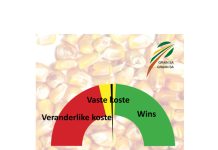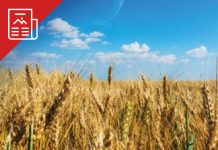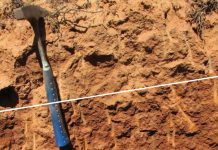Soil erosion (or loss of soil) is one of the most important aspects that influence global food security. Sustainable agriculture focuses, inter alia, on the protection of the ability of soil to continually support plant growth. This article focuses on water erosion and forms part of a series that highlights this resource.
Water erosion is a serious problem in South Africa, as it removes large volumes of fertile soil. It is particularly on the steeper slopes with soils which develop from shales and mudstone, where serious donga formation is visible. However, water erosion also takes place in the grain producing areas and is probably not as conspicuous. In all cases, the negative impact remains the same.
How does water erosion take place?
Water erosion refers to the physical removal of soil particles by water. It therefore takes place where the water flows rapidly enough over the soil to be able to break the soil particles loose and carry them away. In turn, water that flows over soil, is the result of rainfall intensity which exceeds the infiltration rate of the soil. In this way, the primary cause of water erosion is thus linked to a reduced infiltration rate.
Water erosion may be categorised as plate, groove or donga erosion. Donga erosion is the first thought that comes to mind when one refers to water erosion. It entails the formation of deep cuts in the landscape – usually through concentrated water flow. Groove erosion refers to the formation of a multitude of smaller “dongas” by water which does not yet have a concentrated flow.
Plate erosion is the process through which a uniform layer of soil is removed from the surface of the soil. It is probably this form of erosion which is the most dangerous, as the reference point is also removed. Sometimes one can spot a pile of stones in the landscape which stand upon towers of soil which can be several metres high. These stones represent the original soil surface level. It therefore means that all the soil from that apex to the current soil surface has been removed!
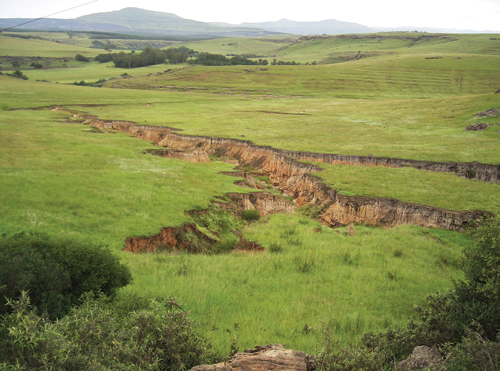
Factors that influence water erosion
Parent material, from which the soil develops, has a significant influence on the erodibility of soil. It is especially the soils that develop from the shales and mudstones of the Ecca and Beaufort formations, in the Eastern Cape Province in South Africa, that are exceptionally erodible.
Soils that develop from granite, are usually also highly erodible, as the sand content is high and there is little clay to contribute to aggregation. In contrast, soils that develop from the basic igneous rocks such as dolerite, diabase, and basalt, are highly resistant to water erosion. In these soils, it is especially the iron and aluminium oxides (therefore red soils) that promote aggregate stability and therefore water infiltration, thus protecting the soil from erosion.
Sodium, as measured according to the exchangeable sodium percentage (ESP), is largely responsible for the dispersion and thus increase in the vulnerability to water erosion. However, the effect of sodium may be reduced by the presence of iron, aluminium and organic material, while the presence of magnesium will just worsen the process.
It is therefore not possible to isolate a single norm for the exchangeable sodium percentage, although a figure of >15% is often used. The erodibility of soils developing from shale, mudstone and granite, may usually be directly ascribed to the high sodium content of the soils, as a result of a high sodium content in the parent material.
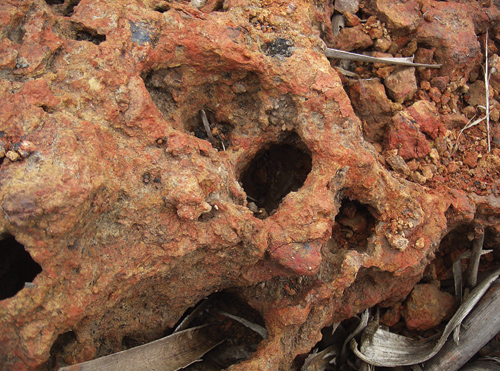
Organic material serves as a binding material for soil particles. Aggregation and aggregate stability are therefore promoted should there be more organic material present in the soil. Because tilling causes a drastic decrease in the organic material content of the soil, it is therefore logical that the soil’s aggregation and water infiltration will decrease which once again will lead to an increase in run-off and thus water erosion.
In soils with less than 20% clay, those soils with a higher silt plus fine sand content, are more vulnerable to water erosion, as these soils are less likely to form stable aggregates.
Rainfall intensity, slope, plant coverage and therefore land use and management, obviously play an important role, but are beyond the scope of this article.
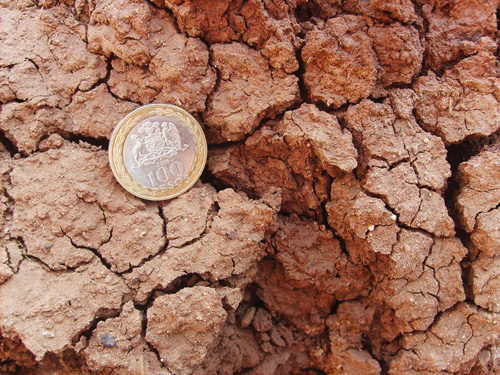
Consequences of water erosion
The major drawback of water erosion is that it is mainly the fine soil particles (clay and organic material) that is eroded. It is these particles that are responsible for the adsorption of cations and retention of water in the soil. The ability of soil to adsorb cations and water thus decreases drastically in soils that have been seriously eroded by water. It also leads to a total reduction in the soil volume which, in turn, leads to a reduction in the soil’s buffer capacity.
Furthermore, the soil that is removed from one place, is usually deposited in another. Mainly along river banks or in dams. This leads to a sealing of the soil along the river banks and the silting up (decrease in storage capacity) of dams. Consider, for example, the Beervlei dam in the Eastern Cape Province which lost its entire usable water storage capacity!
As illustration, we can calculate the mass of soil lost by taking 1 mm of soil loss over one hectare per annum:
0,001 m x 100 m x 100 m x 1 500 kg m-3, thus 15 000 kg per hectare per annum!
Summary
Water erosion is a serious problem in Southern Africa. It is especially as a result of highly erodible soil forming from specific rock formations. In addition, certain land use practices lead to the exposure of the soil to the destructive energy of raindrops. Surface sealing is the first negative process which leads to the increased run-off and therefore water erosion. Tillage and management practices that are focused on the protection of the soil against raindrop energy and surface sealing, are therefore needed to protect soil against water erosion.
For further information, please contact the authors on:
Martiens du Plessis: martiens@nwk.co.za
Prof Cornie van Huyssteen: vanhuyssteencw@ufs.ac.za
REFERENCES
Brady, NC. 1990. The nature and properties of soils. 10th ed. Macmillan Publishing Company: New York.
Laker, MC. 2004. Advances in soil erosion, soil conservation and suitability and land use planning research in South Africa. South African Magazine for Planting and Soil, 21:345 – 368.




